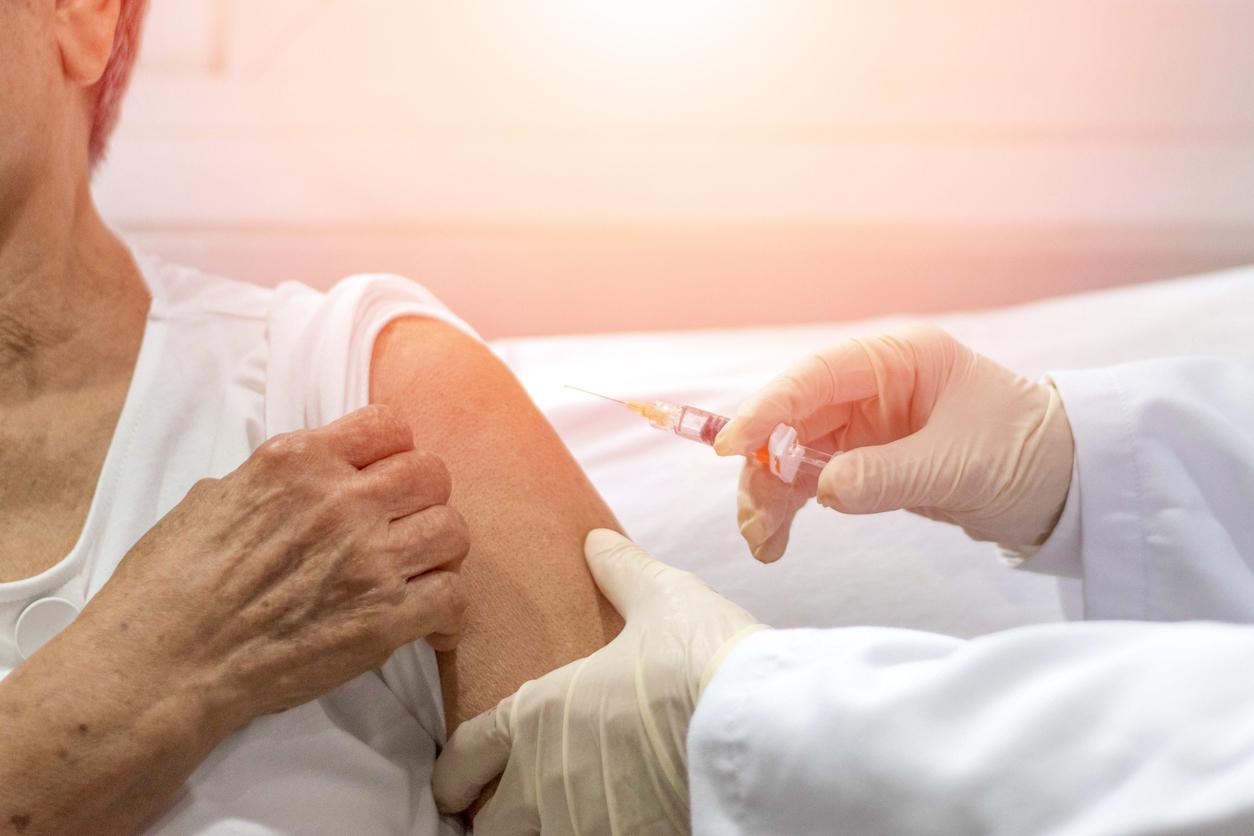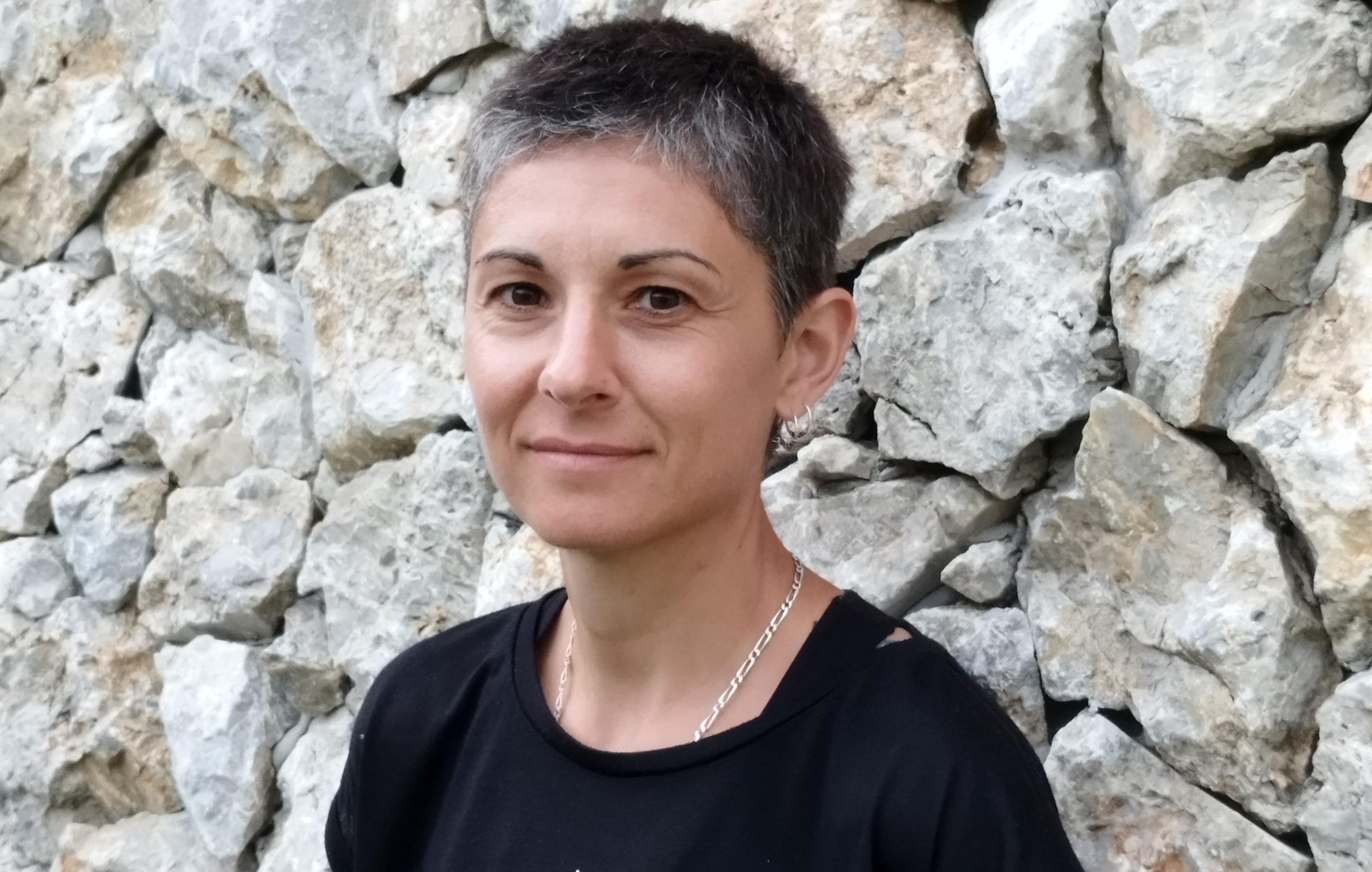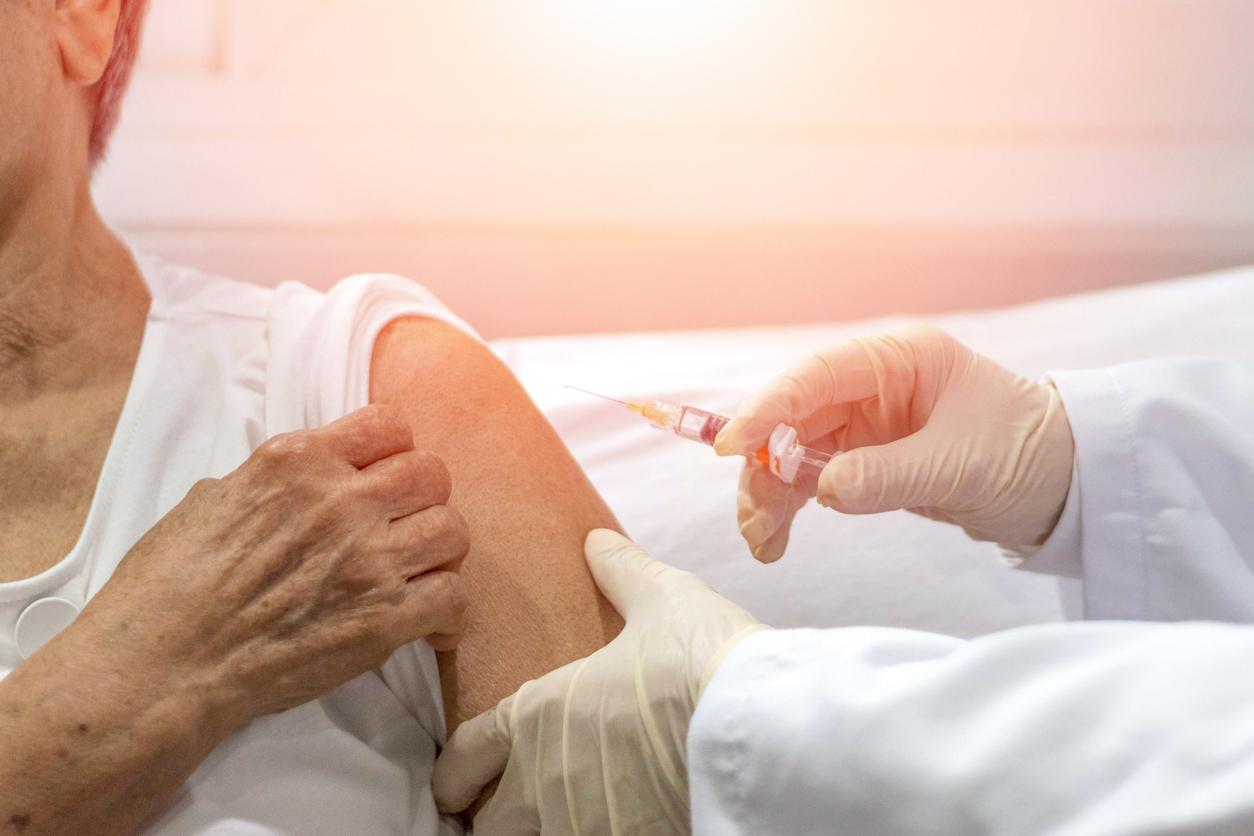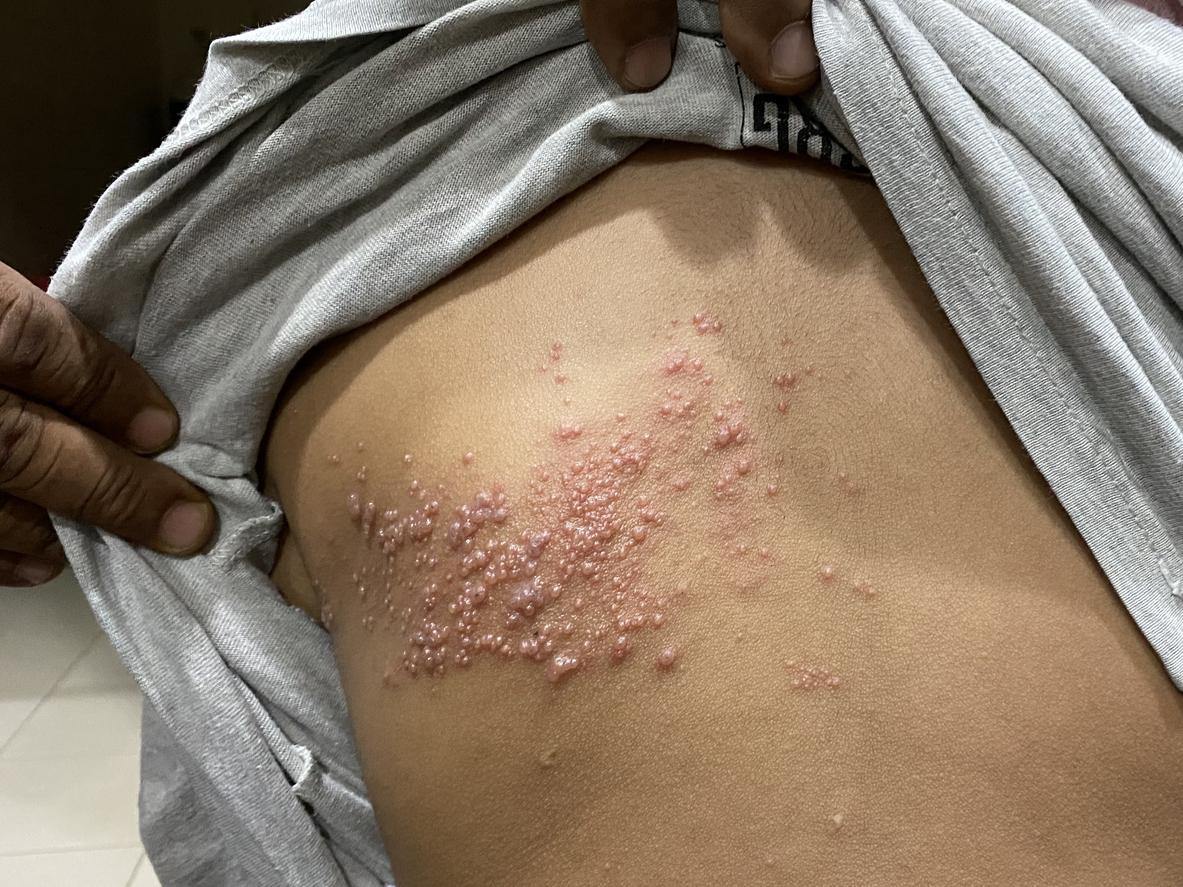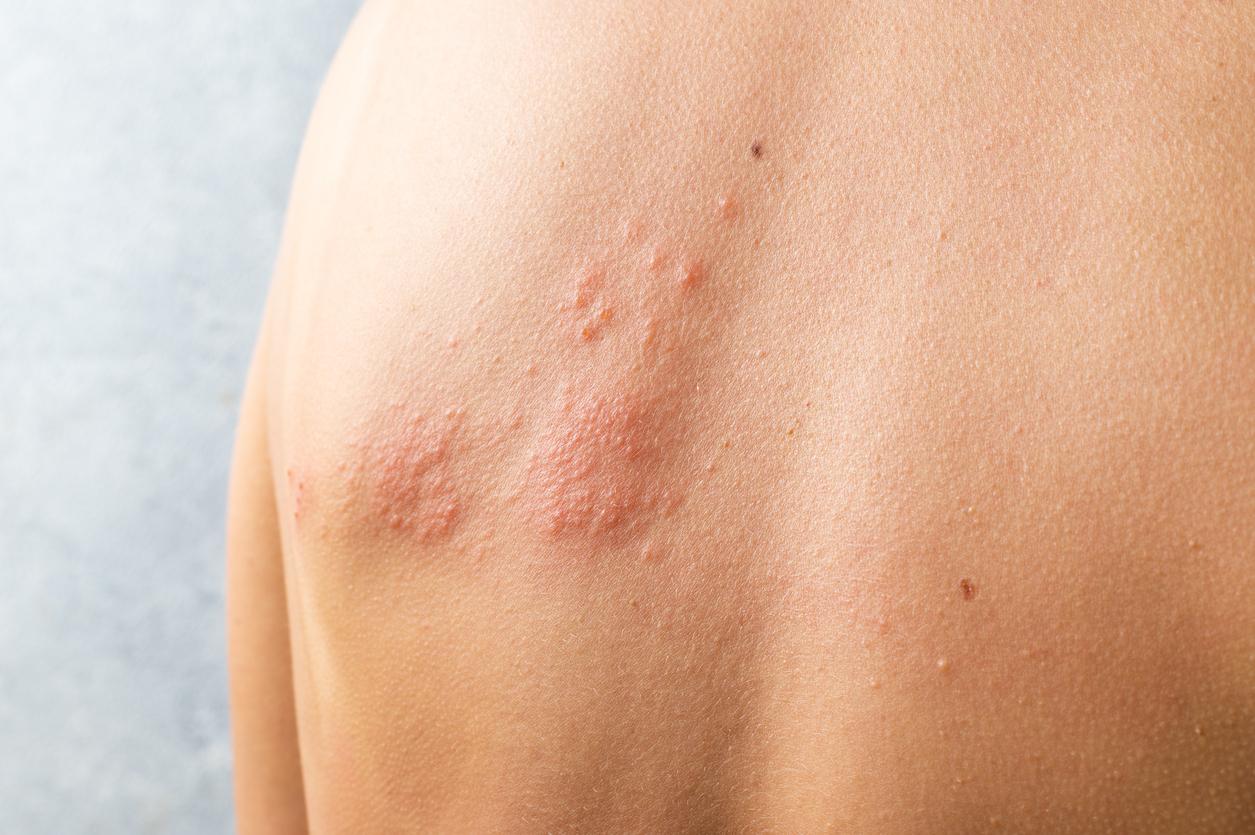Shingles is an infection of a nerve root linked to the varicella virus which reactivates and can give blisters that burn on the skin and intense and rebellious neurological pain. The treatment is not very effective but the vaccination yes.
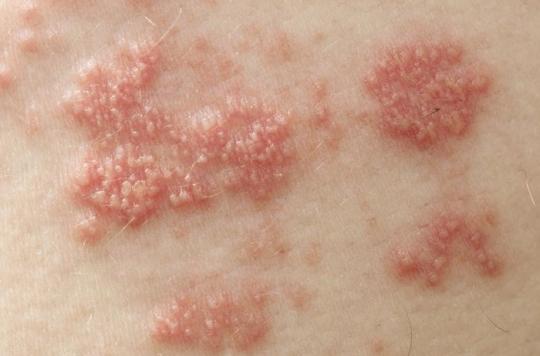
Shingles is a painful skin rash that occurs only in the area innervated by a nerve root. It is due to a reactivation of the varicella-zoster virus (or VZV for “Varicella-Zoster-Virus”), which is the virus also responsible for chickenpox.
From the age of 50, the frequency increases and it is said that after the age of 50, nearly half of people “have had, are having or will have” shingles. When we know that 10 to 15% of patients who have shingles will have intense and persistent after-effect pain, pain which is one of the first causes of suicide from medical causes (apart from depression), the stakes are high.
A rash that burns on the skin
The most common presentation of shingles is that of intercostal shingles. This skin infection corresponds to the reactivation of the VZV virus which had remained quiescent and hidden at the level of a sensory ganglion of an intercostal nerve: the pain and the rash therefore follow the path of a rib in this case. Sometimes several nerve roots are affected simultaneously.
The rash on the skin may be preceded for a few days by pain (burning sensations) or sensitivity disorders in the future area affected by the infection…. A few hours or a few days later, the rash appears on the skin or mucosa in the territory innervated by the affected nerve fiber.
A reactive virus
After recovery from chickenpox, the virus remains dormant (“quiescent”) in the roots of certain nerves (“nerve ganglia”). Years later, most often on the occasion of a drop in immunity (advanced age, mononucleosis, simple stress, declared AIDS, certain cancers, etc.), the virus is reactivated in one or more nerve ganglia.
From there, it travels up the nerve fibers to the skin (or mucous membrane depending on the affected nerve), causing a chickenpox-like rash (vesicles arranged in clusters) and neurological pain (burning, electric shock) , but only in the area innervated by the nerve endings.
The problem of sequelae
Nearly 90% of shingles heal without sequelae in two or three weeks. In case of immunosuppression, the fear is an extension of shingles on several areas of the body.
But in about 15% of cases, certain complications may appear, and in particular, persistent and very debilitating neurological pain of the neurological root concerned which can last more than six months (“post-herpetic pain”). These pains are excruciating and difficult to treat, which even drives some people to commit suicide.
Specific complications
Shingles can also be serious depending on its location. This is particularly the case of ophthalmic shingles which can damage the cornea (ulceration) with, in addition, paralysis of eye movements and a risk of infection. All of this can lead to loss of the eye.
Shingles around the ear (otitic shingles) can cause decreased hearing and sometimes taste, ringing in the ears, dizziness. It can especially be accompanied by a facial paralysis which appears secondarily.
Genital or buttock shingles can lead to retention of urine of neurological origin.
The treatment is not very effective on the pain
It is absolutely necessary to consult very quickly. While waiting for the consultation with the doctor, it is possible to calm the signs of shingles with daily showers in lukewarm water using a surgras soap and applying an antiseptic to prevent superinfections (eg Chlorhexidine in aqueous solution) . It is also possible to apply fresh water compresses or simple dressings. It is important not to scratch and you even have to cut your nails.
Corticosteroid therapy, used for a while, does not work. Specific antivirals only work on the infection and do absolutely nothing to prevent intolerable and persistent pain, contrary to what is commonly accepted. These pains are, moreover, poorly controlled by conventional painkillers, which requires the addition of neurogenic drugs, such as antiepileptics and antidepressants to try to control the pain. But these can give side effects, and a risk of falling and therefore of fracture by bone fragility.
Prevent rather than suffer
The only really effective treatment is to prevent this pain by preventing shingles, and this is now possible by vaccinating people with a vaccine which is reimbursed at 35% beyond 65 years, but whose supplement is covered by the mutuals.
This is well tolerated and simple to perform (a single injection) and there is no need for a booster. And above all, the shingles vaccine is very effective: real-life data in a large english database show that it reduces the risk of shingles by 60%, but above all, that it reduces the risk of neuropathic pain after shingles by 80%. Under these conditions, it is difficult to understand why only 7% of people over 65 are vaccinated against shingles in France, compared to more than 60% in the United Kingdom.

.






